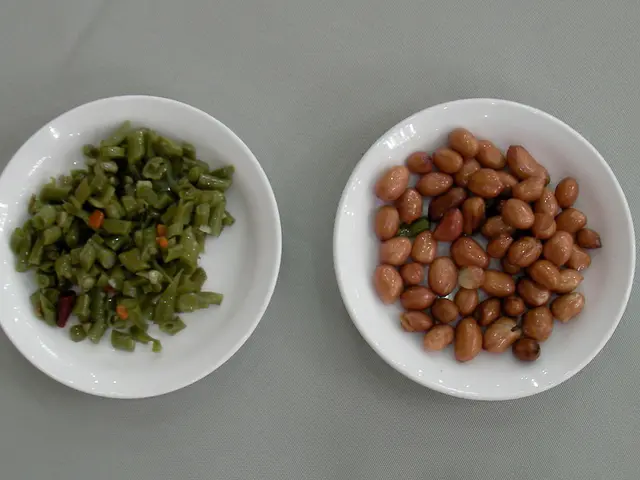Metabolic Functions of Liver and Drugs: Exploring Their Interactions
In the intricate world of drug metabolism, the liver plays a pivotal role. This organ, often referred to as the body's chemical factory, is responsible for processing and eliminating a wide array of substances, including drugs.
Phase 1 Metabolism: Oxidative Reactions
The primary enzymes involved in phase 1 metabolism, also known as oxidative reactions, are the cytochrome P450 (CYP450) enzymes. These enzymes, including CYP3A4 (and its murine homolog CYP3A11), CYP2E1, CYP1A2, CYP2A6, CYP2C8, and various CYP2C subfamily members, catalyze oxidation, reduction, and hydrolysis reactions. These reactions convert lipophilic drugs into more reactive hydrophilic metabolites, making them easier for the body to process further.
Phase 2 Metabolism: Conjugation Reactions
In contrast, phase 2 metabolism involves conjugation reactions, such as glucuronidation and sulfation. Unlike CYP450 enzymes, the key enzymes for phase 2 metabolism are not CYP450s but rather conjugating enzymes, such as UDP-glucuronosyltransferases (UGTs). UGTs, including UGT1A1 and UGT1A2, add polar groups to phase 1 metabolites, facilitating their elimination from the body. Notably, UGT1A1 is upregulated in certain hepatic conditions, indicating its key role in detoxification during oxidative stress.
The Impact of Genetics and Drug Interactions
Genetic polymorphisms in CYP enzymes, such as CYP1A2, can significantly alter drug metabolism, affecting individual responses. Furthermore, certain drugs can interact with CYP450 enzymes, either inhibiting or inducing their activity. For instance, CYP3A4, one of the major enzymes metabolizing many drugs, can be affected by inhibitors (e.g., grapefruit juice) or inducers (e.g., rifampin), influencing drug interactions.
The Role of the Liver in Drug Metabolism and Beyond
The liver, being the main organ responsible for drug metabolism, stores or metabolizes fat-soluble vitamins for future use, creates and secretes bile, which helps with digestion by breaking down fats into fatty acids, and plays a role in several functions, including metabolism, immunity, digestion, detoxification, vitamin storage, and bile production.
It's essential to understand that drug metabolism is a specific type of metabolism that occurs to help the body excrete drugs easily. While the liver is the primary organ involved, the body uses enzymes for drug metabolism throughout its systems.
However, it's crucial to note that certain drugs can cause liver dysfunction and liver damage, leading to organ failure in severe cases. This is known as drug-induced hepatotoxicity or drug-induced liver injury (DILI). In the United States, DILI is the most common cause of acute liver failure.
In conclusion, the liver carries out drug metabolism through complex processes involving cytochrome P450 enzymes during phase 1 reactions and conjugative reactions during phase 2. Understanding these processes can help in the development of more effective drugs and in the prevention of drug-induced liver injury.
- Maintaining health and wellness relies on the efficient metabolism of drugs, especially through the oxidative reactions catalyzed by cytochrome P450 enzymes in the liver, during phase 1 metabolism.
- The liver's involvement in drug metabolism extends beyond excreting drugs, as it also stores fat-soluble vitamins, creates bile, aids in digestion, and plays a role in immunity, metabolism, and detoxification.
- While the liver is the primary organ for drug metabolism, the body integrates this process in various other systems, such as fitness and exercise, nutrition, and therapies and treatments.
- However, some drugs may pose health risks, including drug allergy, by causing liver damage through drug-induced hepatotoxicity or drug-induced liver injury (DILI).
- By understanding drug metabolism processes, researchers can develop more effective drugs, reduce drug interactions, and strive to prevent drug-induced liver injury, enhancing health, and wellness.






